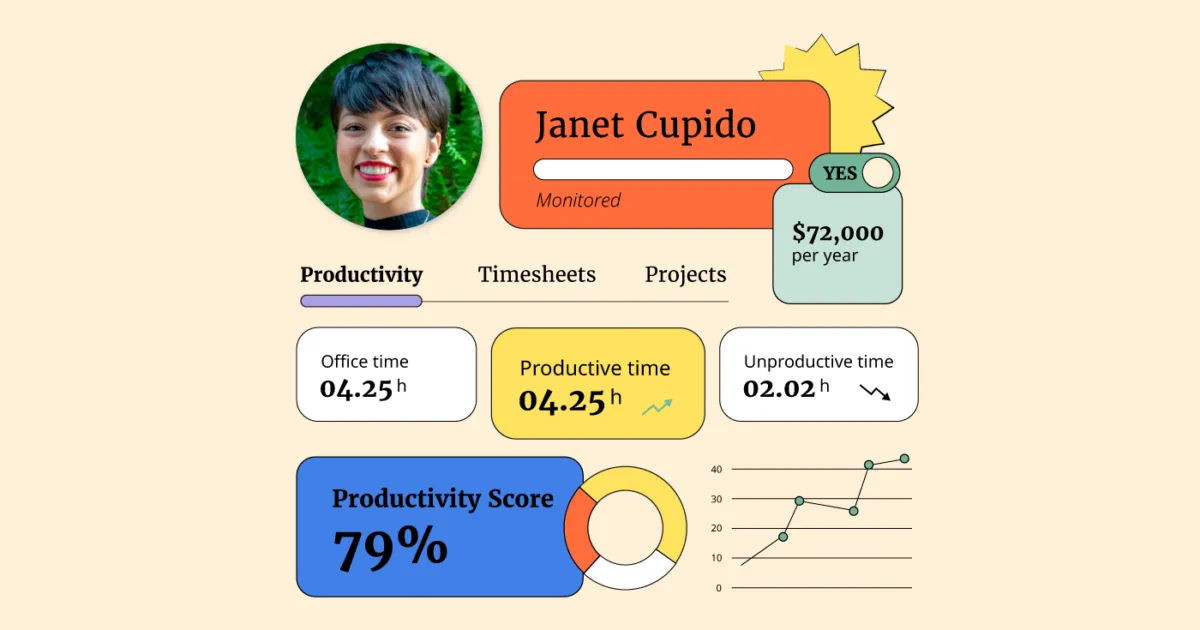Key Trends Shaping Employee Monitoring Software for Remote Work in 2024
Overview of Employee Monitoring Software Trends
Current Landscape of Employee Monitoring Tools
Employee monitoring software has become essential for businesses. It helps ensure productivity and security in remote work settings. These tools track activities, measure performance, and provide insights into employee behavior.
The market is full of options, each offering unique features. As recently as 2022, global demand for these tools increased by 75%, and the market is projected to reach $1.5 billion by 2025.
The Shift Towards Remote and Hybrid Work Models
Remote and hybrid work models are now standard. This shift has increased the need for effective monitoring solutions. Companies use these tools to maintain oversight and ensure productivity.
Eight in ten leaders say remote work makes it hard to trust employees are being productive. More than 70% of managers store recordings of employee communications for performance evaluations. This highlights the critical role of monitoring software in today's workplace.
Emerging Features in Employee Monitoring Software for 2024
Advanced Analytics and Reporting Capabilities
Advanced analytics are becoming a core feature of employee monitoring software. These tools provide detailed reports on employee activities, helping managers understand work patterns. They offer insights into productivity, engagement, and potential bottlenecks.
For example, some platforms provide location-based insights that are more accurate than badging systems. They show where employees are most productive, whether at home or in the office.
AI-Powered Insights and Predictive Analytics
AI is transforming employee monitoring. AI-powered tools offer predictive analytics, identifying trends and forecasting future performance. This helps in proactive management and addressing issues before they escalate.
AI can detect unusual behavior, signaling potential security risks. It also helps in understanding employee sentiment and engagement levels. This technology enables timely interventions to maintain a positive work environment.
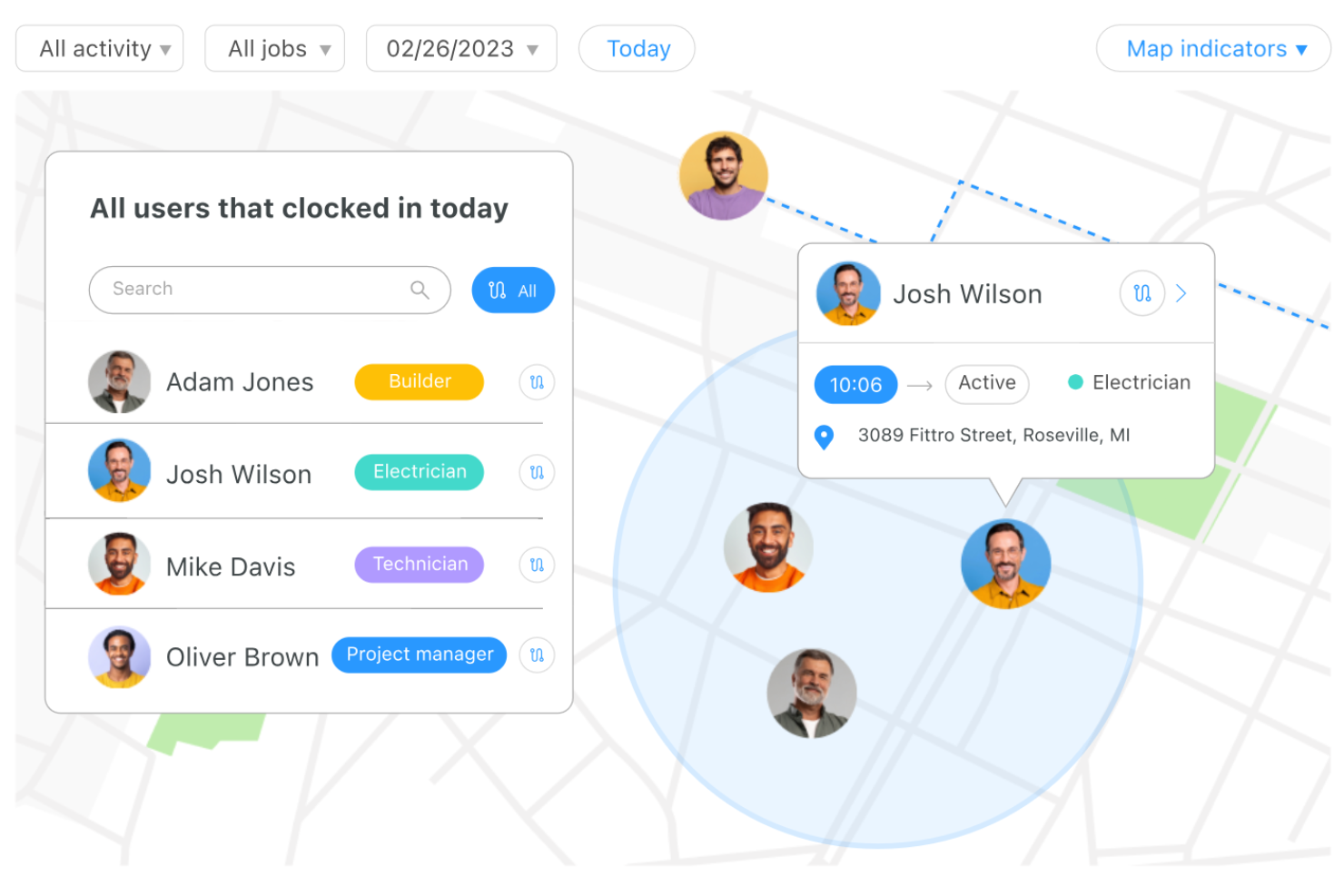
Enhanced Privacy Controls and Employee Empowerment Features
Privacy is a significant concern with employee monitoring. New software versions include enhanced privacy controls, allowing employees to manage their data. Features like pausing monitoring during breaks address these concerns.
Many organizations empower employees with personal insights dashboards. These tools help individuals understand their work habits and improve productivity. They promote a sense of ownership and transparency.
The Impact of Employee Monitoring on Remote Work Productivity
Measuring Productivity: Balancing Oversight and Trust
Employee monitoring software helps measure productivity, but it's crucial to balance oversight with trust. Excessive monitoring can lead to stress and reduced morale. It's essential to use these tools to support, not micromanage.
Over half of monitored employees feel stressed. However, 90% are open to data collection if it leads to more benefits. Striking the right balance is key to maintaining a productive and positive work environment.
Employee Engagement and Satisfaction: The Double-Edged Sword of Monitoring
Monitoring can boost engagement if used correctly. When employees see that their efforts are recognized and rewarded, their satisfaction increases. However, invasive monitoring can damage trust and lower morale.
Companies using workforce analytics report 24% higher retention rates. This shows that when used thoughtfully, monitoring can enhance job satisfaction. It's about finding the right balance.
Case Studies: Success Stories of Effective Monitoring
Many companies have successfully implemented employee monitoring. For instance, some organizations have seen significant productivity gains and ROI by using data-driven insights. These success stories highlight the potential benefits of well-implemented monitoring.
One company reported $4.2 million in productivity gains and a 4x ROI. Such examples demonstrate how effective monitoring can lead to substantial improvements. They also show the importance of using these tools wisely.
Best Practices for Implementing Employee Monitoring Software
Establishing Clear Policies and Communication Channels
Clear policies are crucial for successful employee monitoring. Employees need to know what data is collected, how it's used, and who has access. Transparency builds trust and ensures compliance with regulations.
A well-defined policy document should be signed by all employees. This document should outline the goals and expectations of monitoring. It's also important to use simple language that everyone can understand.
Ensuring Transparency and Building Trust with Employees
Transparency is vital in employee monitoring. Being open about the reasons for monitoring helps maintain trust. When employees understand that the goal is to support their productivity, they are more likely to accept monitoring.
Explaining how real-time activity data helps managers support employees is essential. For example, it can help identify unbalanced workloads and support overworked employees. This fosters a culture of trust.
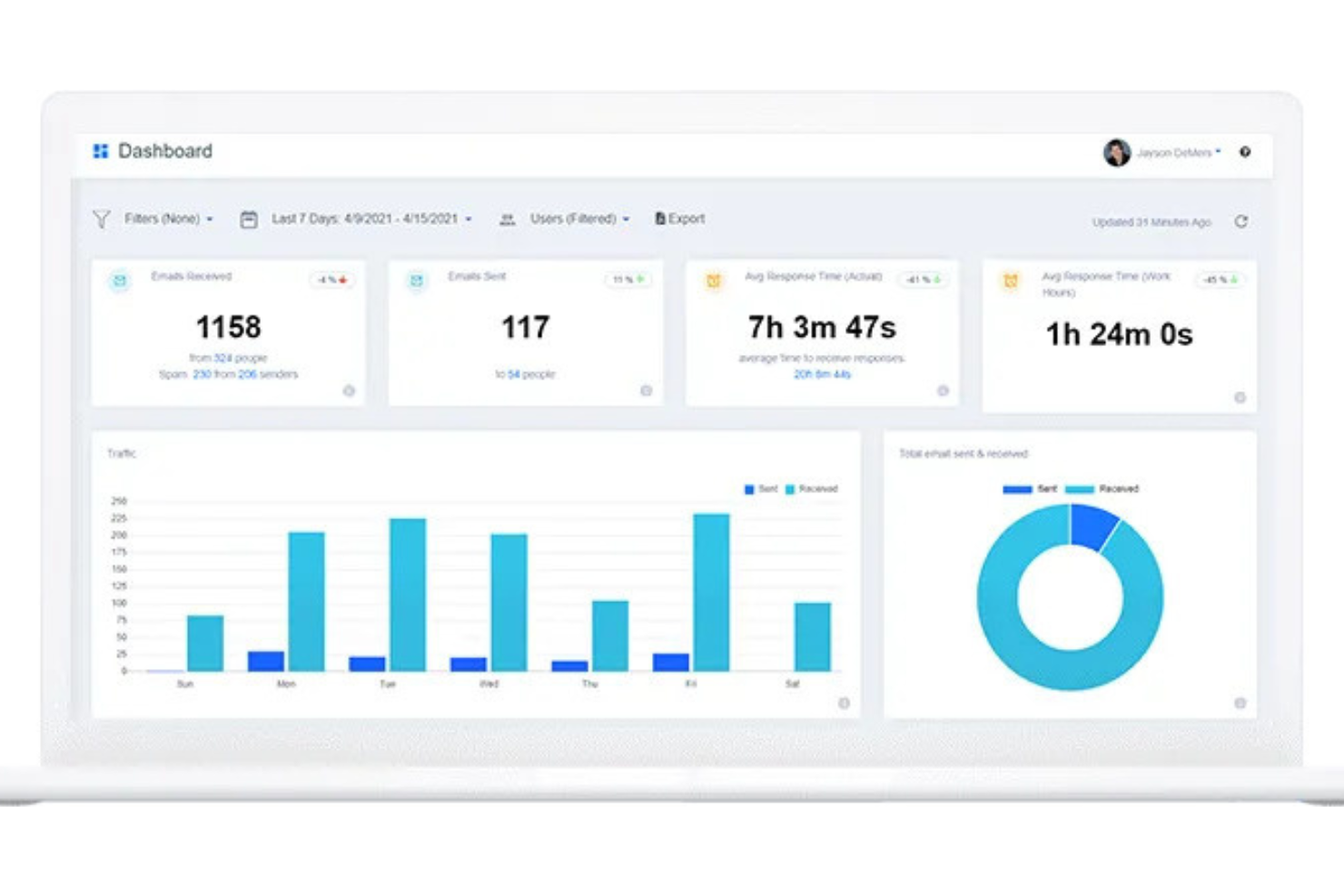
Regular Review and Adaptation of Monitoring Practices
Monitoring practices should be regularly reviewed and adapted. This ensures they remain effective and relevant. Feedback from employees should be considered to make necessary adjustments.
Staying updated with legislative changes is also crucial. This helps in maintaining compliance and avoiding penalties. Regular reviews ensure that monitoring practices evolve with the changing work environment.
Legal Considerations for Remote Employee Monitoring
Understanding the Evolving Legal Landscape
The legal landscape for employee monitoring is constantly changing. Employers need to stay informed about new laws and regulations. This includes understanding federal and state laws that impact monitoring practices.
For instance, some states require employers to provide notice when monitoring online activity. Keeping up with these changes helps ensure compliance and avoid legal issues. ActivTrak offers a blog on employee monitoring trends to help you stay informed.
Compliance with Data Protection Regulations (GDPR, CCPA, etc.)
Compliance with data protection regulations like GDPR and CCPA is essential. These regulations require employers to protect employee data and be transparent about its use. Ensuring compliance helps avoid fines and builds trust.
For example, GDPR requires monitoring access to sensitive information. Tools like ActivTrak can be configured to support compliance with these regulations. This ensures that data is handled responsibly.
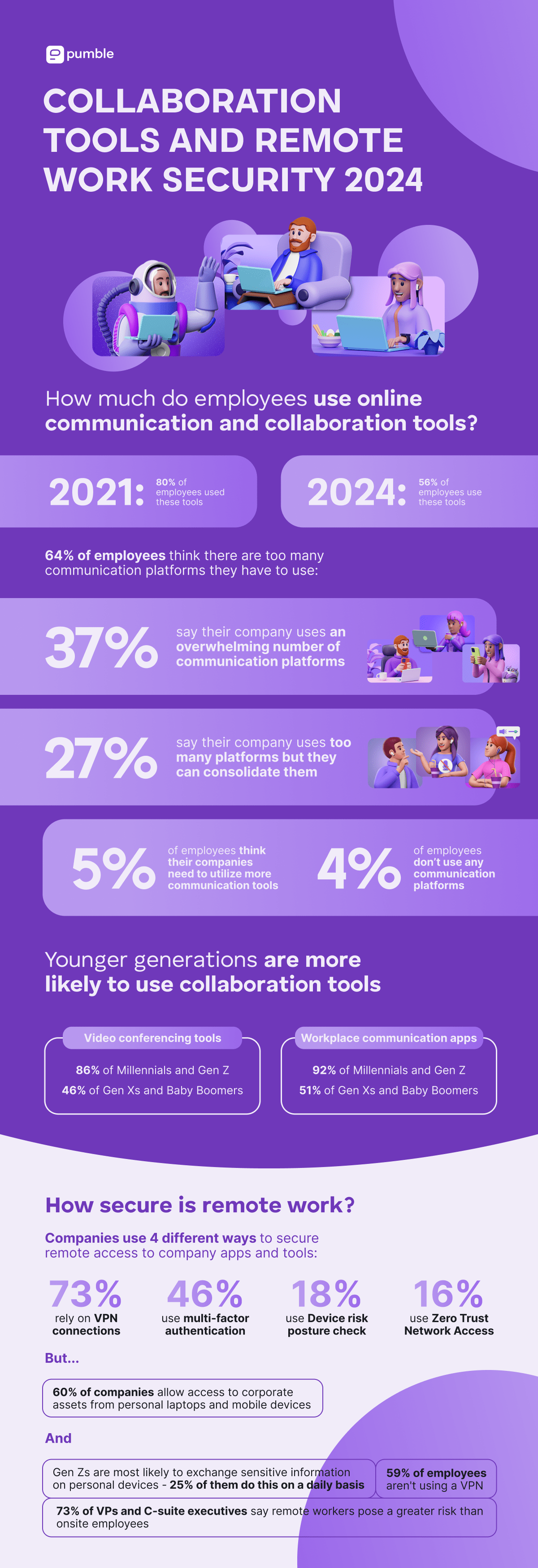
Best Practices for Ethical Monitoring and Employee Privacy
Ethical monitoring involves respecting employee privacy. Monitoring should only occur during work hours. Avoiding invasive practices like keylogging is crucial for maintaining trust.
Using monitoring tools to support productivity, not surveillance, is essential. This includes providing employees with insights into their data and allowing them to manage their privacy settings. Ethical practices help maintain a positive work environment. You can read more about employee monitoring ethics in this article on employee monitoring ethics best practices.
Future Outlook: Predictions for 2025 and Beyond
Anticipated Technological Innovations in Monitoring Tools
Technological innovations will continue to shape employee monitoring. Advanced AI and machine learning will offer more sophisticated insights. These tools will enhance predictive analytics, helping to identify trends and anticipate future needs.
New features may include emotion recognition technology to gauge employee morale. While innovative, this raises privacy concerns. Balancing innovation with ethical considerations will be crucial.
The Role of AI and Machine Learning in Shaping Future Trends
AI and machine learning will play a significant role in the future of monitoring. These technologies will enable more accurate and timely insights. They will help in creating a more responsive and supportive work environment.
Predictive analytics will become more refined. This will allow for early interventions to prevent burnout and improve productivity. AI will also enhance data security by detecting unusual patterns and potential threats.
Shifting Employee Expectations and the Need for Adaptability
Employee expectations are shifting, with a greater emphasis on flexibility and work-life balance. Monitoring tools need to adapt to these changes. They should support, not hinder, a flexible work environment.
Employees are becoming more aware of their data rights. They expect transparency and control over their information. Companies that adapt to these expectations will build stronger, more trusting relationships with their employees. Check out the remote work trends for 2025 to better prepare for these changes.
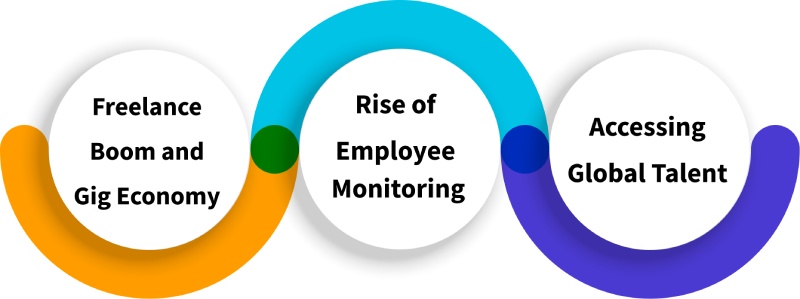
Key Takeaways:
- Advanced analytics and AI are transforming employee monitoring, providing deeper insights into productivity and engagement.
- Balancing oversight with trust is crucial; excessive monitoring can reduce morale, while thoughtful monitoring can enhance job satisfaction.
- Clear policies, transparency, and regular reviews are essential for effective and ethical monitoring practices.
- Compliance with data protection regulations like GDPR and CCPA is mandatory to avoid legal issues and build trust.
- Technological innovations will continue to shape monitoring tools, with AI and machine learning playing a significant role in future trends.
